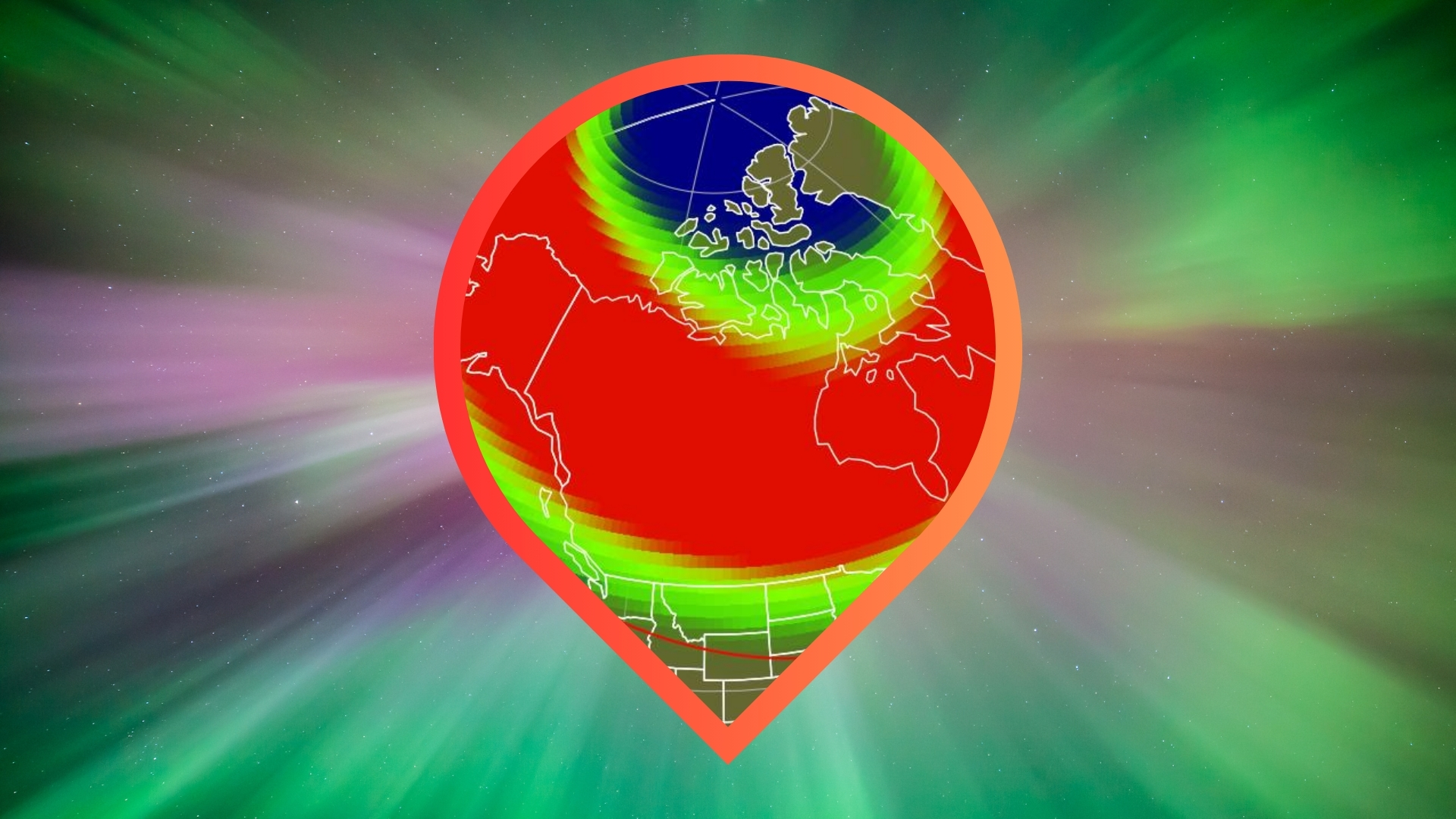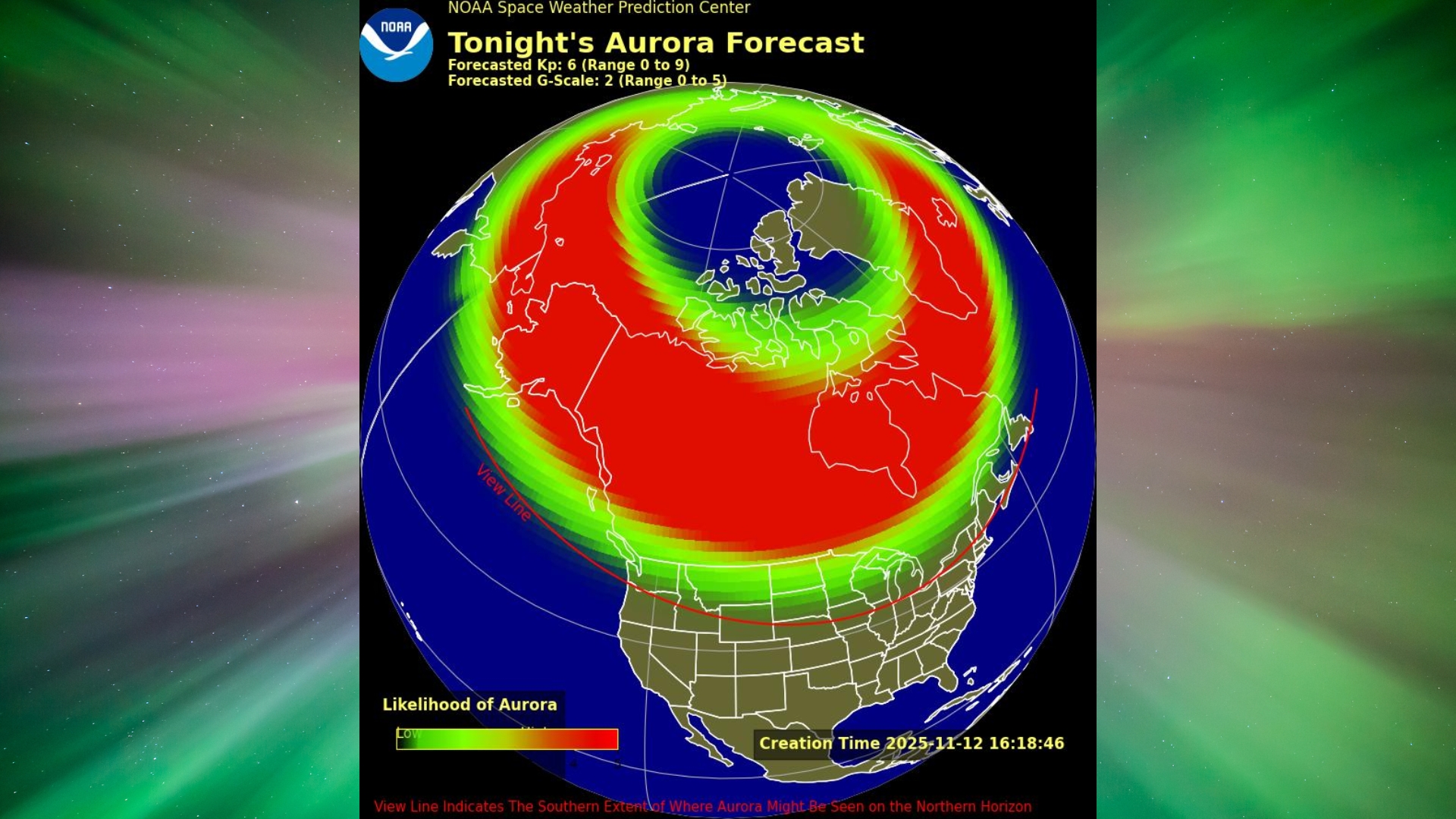Northern lights may be visible in 17 states (or more) tonight
Auroras may be visible from Alaska to Illinois as an incoming coronal mass ejection could spark severe geomagnetic storm conditions overnight.

Ready for round two, aurora chasers?
The northern lights may dazzle again tonight (Nov. 12) as a speedy incoming coronal mass ejection (CME) released during yesterday's colossal X5.1 class solar flare could spark strong to severe geomagnetic storm conditions, according to the National Oceanic and Atmospheric Administration (NOAA).
Space weather forecasters anticipate that geomagnetic activity could intensify to strong (G3) or even severe (G4) conditions overnight. The U.K. Met Office is going one step further and assigning an extreme G5 watch for between 7 a.m. EST and 6:59 p.m. EST (12:00 - 23:59 GMT) on Nov. 12.
Last night's display triggered by two previous CME impacts was absolutely stunning, with auroras spotted from coast to coast and even as far south as Mexico. Check out some of the best photos here in our wrap.
Where can I see the northern lights tonight?
States that could see auroras tonight
Based on the latest NOAA aurora forecast map, the following 17 U.S. states appear full or partially above the aurora view line:
- Alaska
- Washington
- North Dakota
- Montana
- Minnesota
- Idaho
- South Dakota
- Wisconsin
- Oregon
- Michigan
- Vermont
- New Hampshire
- Wyoming
- New York
- Iowa
- Nebraska
- Illinois
As always, auroras can be fickle creatures. This list is based on current forecast data, but with geomagnetic activity still strong and another CME on the way, auroras could reach much farther south than expected — potentially visible across much of the U.S. if the conditions are right and the skies are clear.
Northern Hemisphere aurora forecast courtesy of the U.K. Met Office
What time should I look for the northern lights tonight?
The northern lights could be visible across 17 U.S. states (or maybe more) tonight (Nov. 12-13) as soon as it gets dark, so it's worth keeping an eye on the sky throughout the evening, especially in areas with clear, dark skies.
Breaking space news, the latest updates on rocket launches, skywatching events and more!
According to NOAA's 3-day forecast, geomagnetic storm activity is expected to stay high throughout the night, with the best chances of auroras during the following key times:
- 7 p.m. - 10 p.m. EST (0000-0300 GMT): Strong G3 level storming possible
- 10 p.m. - 4 a.m. EST (0300–0900 GMT): Moderate G2 level storming possible
How can I see the northern lights from where I live?
If you live in one of the 17 U.S. states forecasted to catch a glimpse of the northern lights tonight, there are a few things you can do to give yourself the best chance of seeing them.
- Find a north-facing vantage point with a clear view of the horizon as far from light pollution as possible.
- Use your phone camera to scan the sky, as the camera is great at picking up faint auroras before your eyes spot them. This will give you a good idea of the direction you should be focusing your attention.
- Try to let your eyes adapt to the dark for at least 30 minutes; this will help your night vision develop.
- Wear warm clothing! Part of the fun of aurora hunting is the chase. Be prepared to sit or stand for hours if conditions are looking promising, as you won't want to miss the show when it starts!
We recommend downloading a space weather app that provides aurora forecasts based on your location. One option I use is "My Aurora Forecast & Alerts," available for both iOS and Android. However, any similar app should work well. I also use the "Space Weather Live" app, which is available on iOS and Android, to get a deeper understanding of whether the current space weather conditions are favorable for aurora sightings.
Editor's Note: If you snap a photo of the northern lights or southern lights and would like to share it with Space.com's readers, send your photo(s), comments, and your name and location to spacephotos@space.com.

Daisy Dobrijevic joined Space.com in February 2022 having previously worked for our sister publication All About Space magazine as a staff writer. Before joining us, Daisy completed an editorial internship with the BBC Sky at Night Magazine and worked at the National Space Centre in Leicester, U.K., where she enjoyed communicating space science to the public. In 2021, Daisy completed a PhD in plant physiology and also holds a Master's in Environmental Science, she is currently based in Nottingham, U.K. Daisy is passionate about all things space, with a penchant for solar activity and space weather. She has a strong interest in astrotourism and loves nothing more than a good northern lights chase!
You must confirm your public display name before commenting
Please logout and then login again, you will then be prompted to enter your display name.
